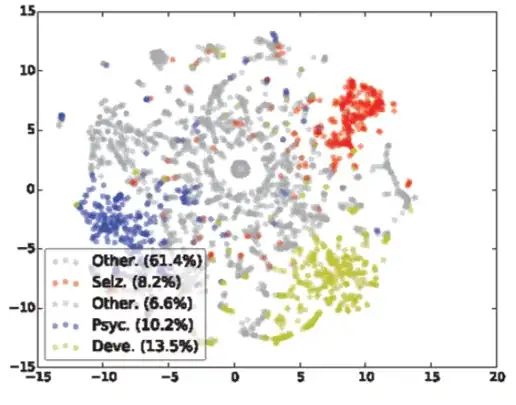t-SNE is a technique for visualizing high-dimensional data in a low-dimensional space (2- or 3-dimensional). It attempts to preserve local structure: in other words, points that are close (according to some metric) in high-dimensional space remain close in the new, low-dimensional space.
The mapping between the high-dimensional and low-dimensional space isn't simple, however. It's computed using an iterative procedure (for details, see here), and it ends up being highly nonlinear.
This isn't surprising; a linear mapping wouldn't help with dimensionality reduction. Quoting from the paper,
Traditional
dimensionality
reduction
techniques
such
as
Principal
Components
Analysis
(PCA;
Hotelling,
1933)
and
classical
multidimensional
scaling
(MDS;
Torgerson,
1952)
are
linear
tech-
niques
that
focus
on
keeping
the
low-dimensional
representations
of
dissimilar
datapoints
far
apart.
For
high-dimensional
data
that
lies
on
or
near
a low-dimensional,
non-linear
manifold
it is
usually
more
important
to
keep
the
low-dimensional
representations
of
very
similar
datapoints
close
together, which
is typically
not
possible
with
a linear
mapping.
Anyway, all of this is a long-winded way of saying that the axes of a t-SNE plot aren't easily interpretable in terms of the axes/units of the original, high-dimensional data. So I wouldn't try to interpret a t-SNE plot quantitatively; t-SNE is just a visualization technique, nothing more.
